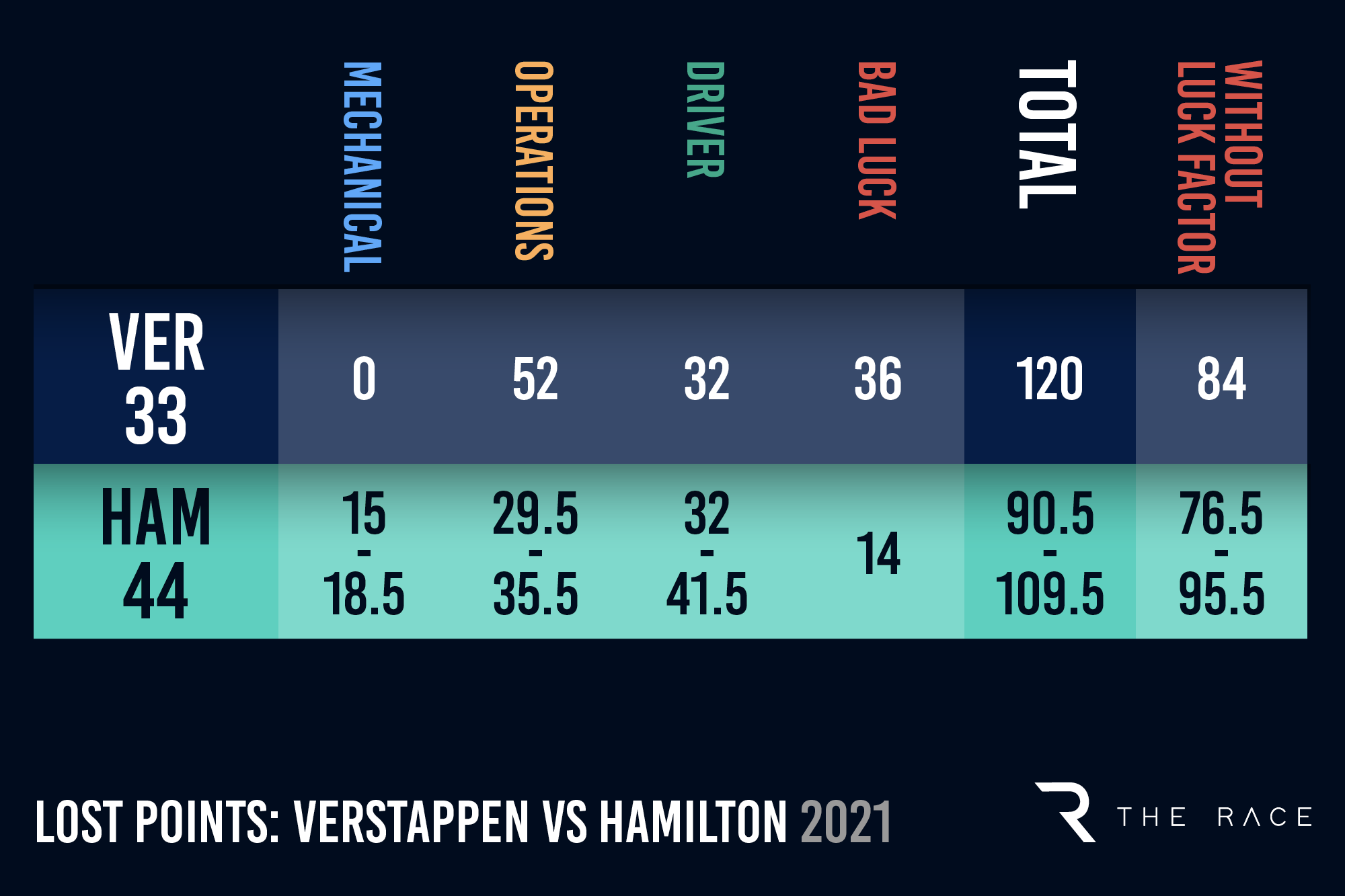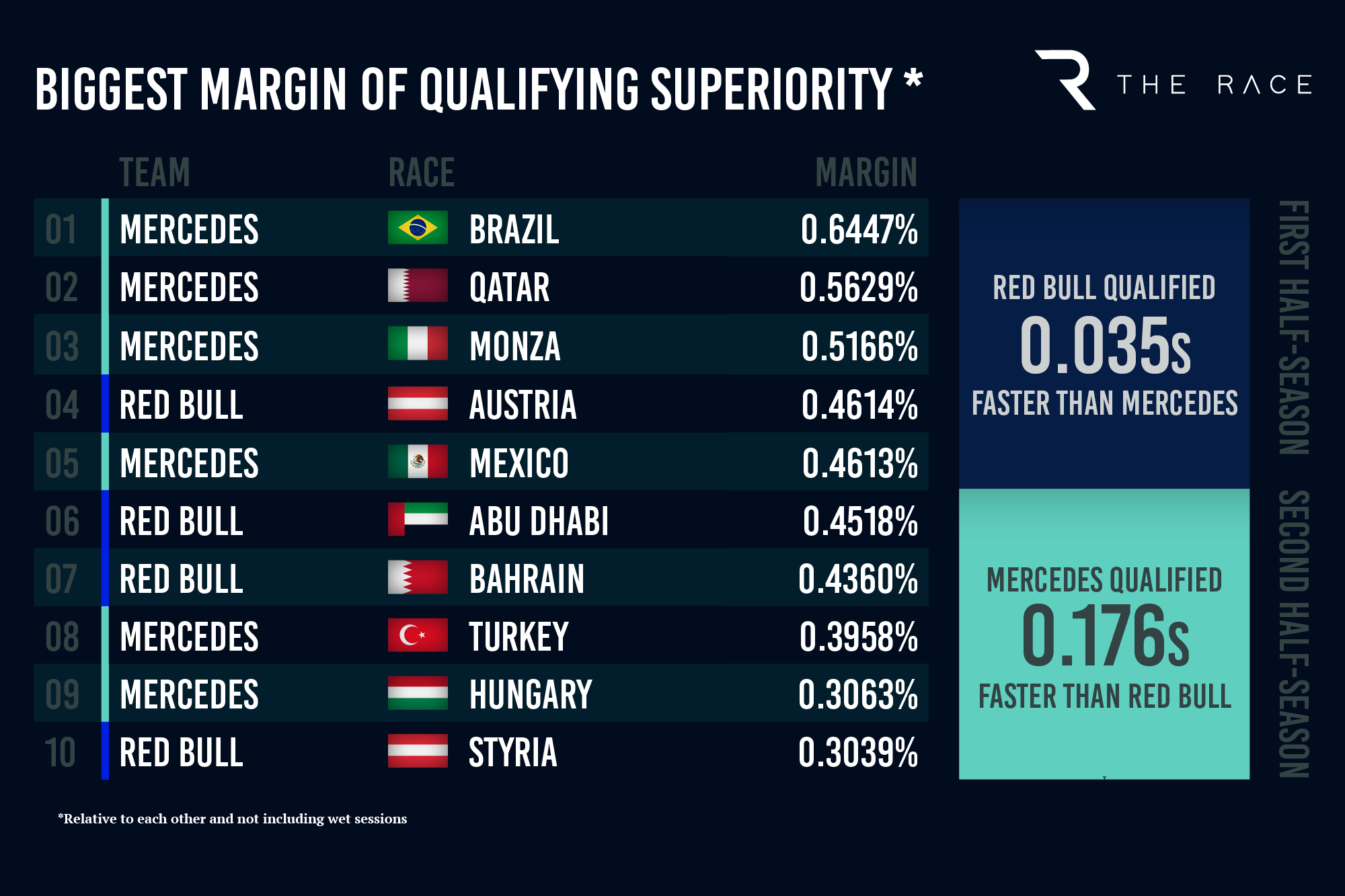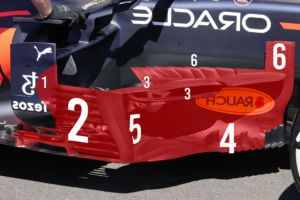Up Next

Now that the dust has settled upon the epic Max Verstappen/Lewis Hamilton 2021 Formula 1 world championship battle, the controversial Abu Dhabi Grand Prix finale now history, it’s a good time of reckoning for their contest over the season as a whole.
The titles were not won and lost only on that Sunday in Yas Marina. They were a combination of supreme performances from both drivers and both teams from March to December, of differing circumstances suiting one car better than another on any given weekend, of reliability, operational performances, individual feats of virtuosity, errors from both team and drivers, the wheel-to-wheel dynamics of their duels – and plain luck, good or bad.
So within the framework of two extremely closely-matched car/driver combinations, we can look at the specific crucial moments that made a difference in the respective points totals.
Regardless of stewards’ decisions or whether the race director acted appropriately or not in the finale, regardless of the racing ethics of each driver in their various on-track incidents or of how each team interpreted the technical regulations, we can look at the points lost in cold, dispassionate mathematical terms quite easily.
There were several races where either the Mercedes or the Red Bull-Honda held a decisive performance advantage over its rival and their respective lead drivers duly converted that to victory and a maximum points haul (give or take the occasional fastest lap point): the Austrian races for Verstappen, for example, or the Brazil/Qatar/Saudi races for Hamilton. It’s just taken as a given that those races were won and lost on performance and are not part of this reckoning.
But there were times too when the result was determined by other factors – and it is these we are attempting to allocate a points loss to for each driver. Where a shortfall for one driver has resulted not only in a loss for them but a gain for the other, we have expressed it as a net loss.
In terms of their collisions at Silverstone and Monza, for the mathematical purposes of this analysis no attempt has been made to assess responsibility for the accidents themselves, only for the impact they had on the points score of each of them. So at Monza their joint retirement cancelled out any points implication. For Silverstone Hamilton was unaffected but Verstappen was not.
But that was just one of many title-influencing moments.
HAMILTON’S LOST POINTS TO VERSTAPPEN
Monaco
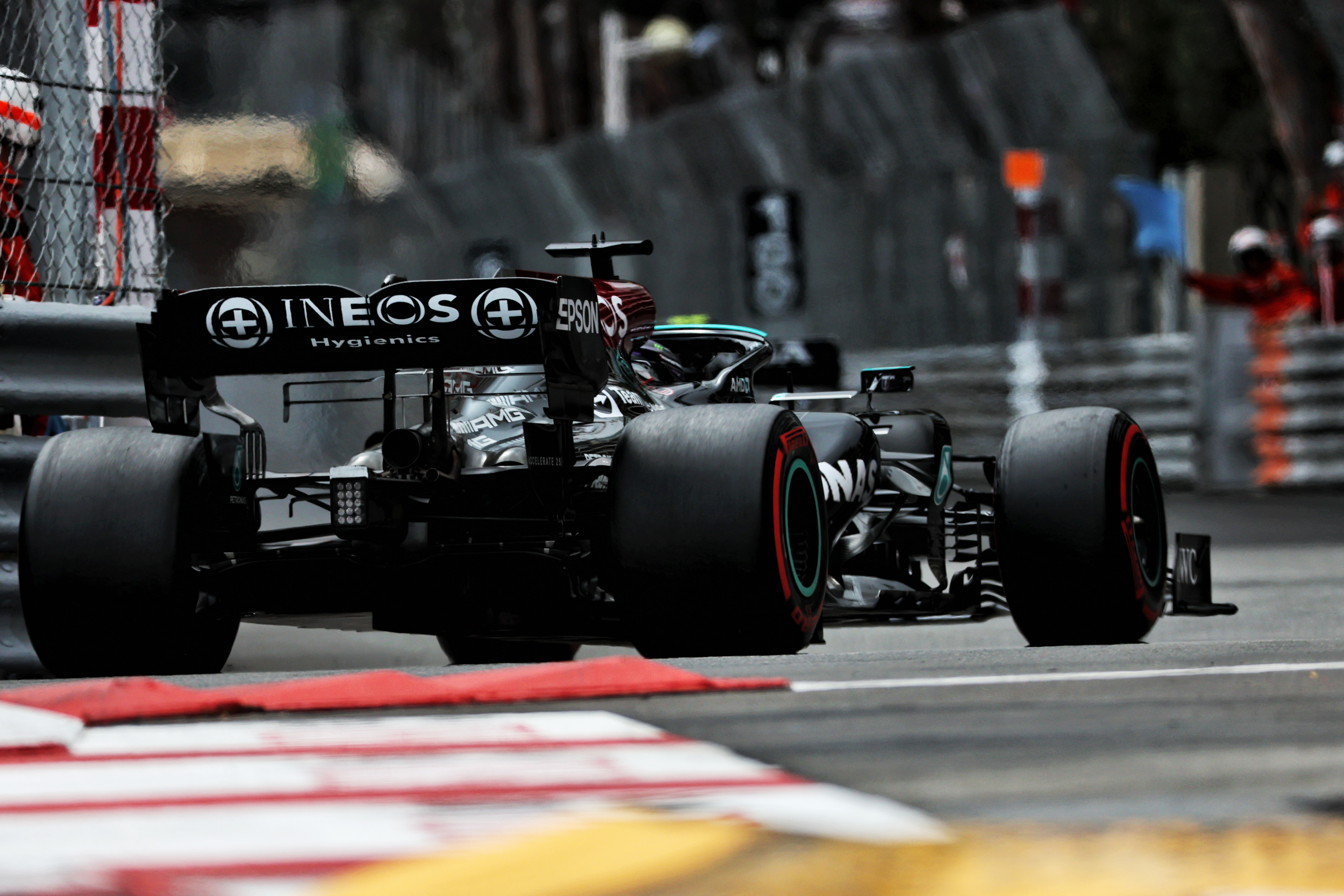
The long wheelbase Mercedes was reluctant to fire up its front tyres fast enough for a decent qualifying lap in the very cool Saturday of Monaco and at the wrong side of that temperature threshold a car can be whole seconds slower than its potential.
Frustrated that the team did not follow his suggestion on set-up ahead of a forecasted overcast Saturday (the track was 18-degrees C cooler than it had been during Thursday practice), Hamilton was left trying to coax the temperature into the rubber by how he drove the car.
He had wanted a more extreme set-up which would have abused the front tyres but which might at least have got them up to temperature for the beginning of the lap. Even on the hot track of Thursday the fronts had been reluctant.
By contrast Valtteri Bottas, who had softened his car off after Thursday, was able to nudge the tyres into the window. He duly went very quickly in qualifying and was in the mix for pole with the Ferraris and Verstappen when Charles Leclerc brought out the red flags.
That left Bottas only third on the grid but half-a-second and four places better than Hamilton who with the conventional set-up could not get the front tyres to within 30-deg C of the minimum temperature needed and was consequently hopelessly compromised by the lack of front-end grip.
Around the track which is easier on the rubber than any other on the calendar Bottas had destroyed his front tyres after just 10 laps, unable to hold onto even the deliberately gentle pace Verstappen was setting so as to close up the field to prevent undercut opportunities for Bottas. Valtteri pitted early with no tyres left – and his front-right wheel refused to come off, making him a retirement.
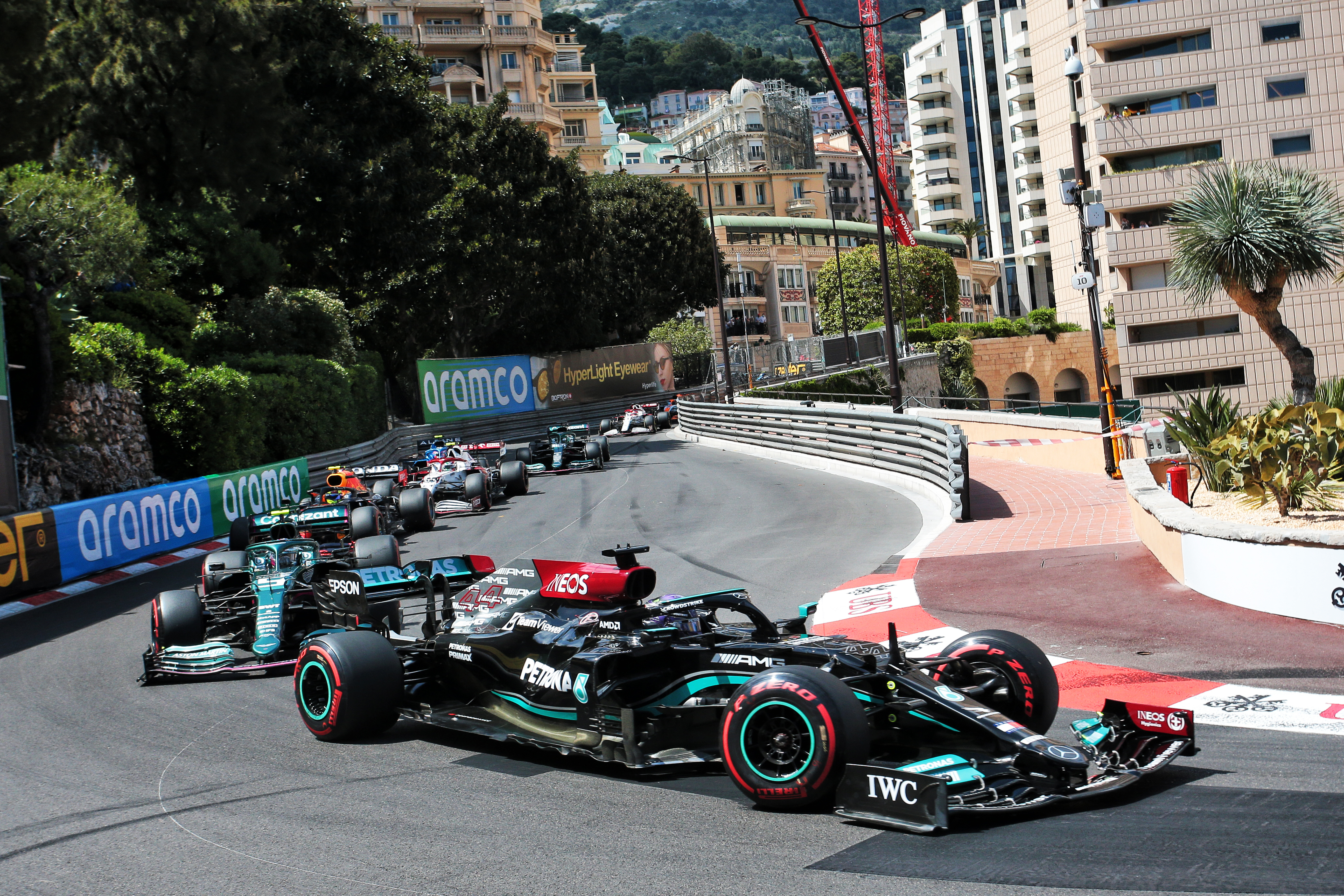
Hamilton’s plan had been to run long and pick off cars as they pitted ahead of him. But his tyres began fading before those cars did that.
Forced to pit earlier than them and on new tyres that took an age to come up to temperature, he was overcut by Pierre Gasly, Sebastian Vettel and Sergio Perez, leaving him seventh at the end. That was purely down to the car’s bad Monaco tyre usage.
Had Hamilton made the same changes as Bottas between Thursday and Saturday, he should have been able to have at least matched Bottas’ qualifying pace. From there he could conceivably have been in the mix for second place – though more likely it would have been third as the car’s heavy tyre usage would probably have seen him jumped at the stops by Sainz if he’d been ahead of the Ferrari up until then.
Seventh place on a day when third was probably feasible, Hamilton quite possibly dropped nine points at Monaco.
Why wasn’t a better set-up compromise reached? Especially given that Hamilton had been urging Mercedes to go in a more extreme direction, anticipating the problems the cool track would bring? He and the team must share responsibility for those dropped points.
Points loss – 9 (team operations/driver).
Azerbaijan
The infamous brake magic error on the late restart, with just two racing laps to go, lost Hamilton a possible victory or a near-certain second at worst.
Locking up at the first turn put him a solid last as he rejoined, out of the points. Somewhere between 18-25 points had been lost right there, a catastrophic loss.
It wasn’t strictly a judgement error, more one of the ergonomic design of his controls; it shouldn’t have been so easy for the position of the switch to have been inadvertently changed.
Points loss – 18 or 25 (car problems/driver).
France
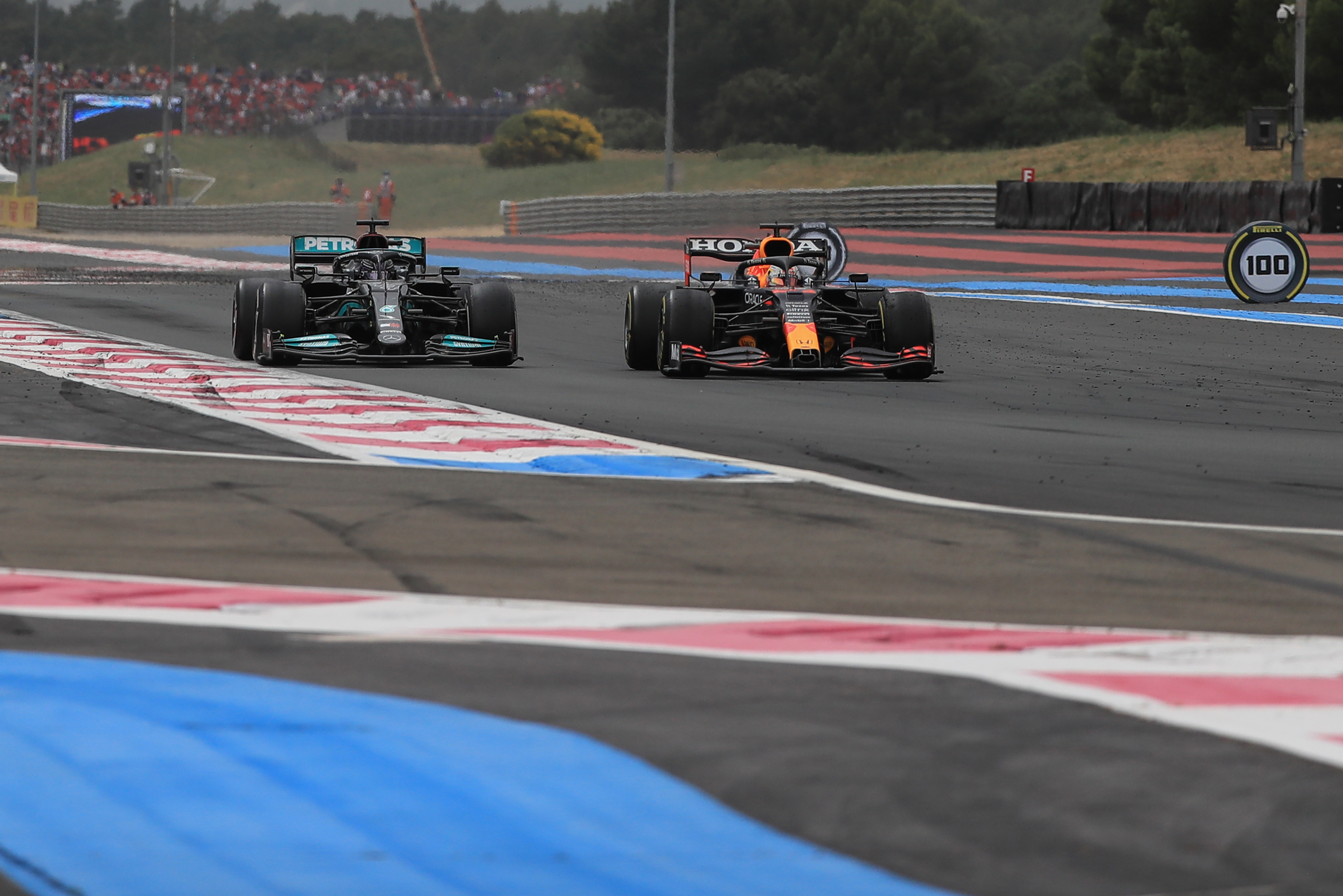
Verstappen took this one at the first pitstops with a spectacular undercut on the race-leading Hamilton. This was because the Mercedes was wearing out its front tyres and the Red Bull was not – and so had a great deal more pace at the end of the stint.
But, lulled into a false sense of security by their 3s gap over Verstappen, was there time left on the table on Hamilton’s in-lap even notwithstanding the poor state of his tyres?
There was also apparent a lack of clarity in the pitwall communications that it actually was the in-lap. There was a possible loss of six points there, but the evidence suggests that even without that ambiguity around the stop, the Mercedes just couldn’t match the late-stint pace of the Red Bull which likely would have won anyway. It won despite a disadvantageous two-stop strategy, after all.
Points loss – probably 0, possibly net 12 (driver/team operations).
Austria

Running a distant second to Verstappen, Hamilton suddenly lost 30 points of downforce as the rear corner of the floor broke.
“There was no driving mistake,” Toto Wolff emphasised. “It wasn’t that he went over a sausage kerb or anything. It was just the loadings that occurred.”
It was a component failure and the pace and tyre life (forcing an extra stop) that it cost him lost him places to Bottas and Lando Norris. Fourth rather than second.
Points loss – 6 (car problems).
Hungary

A big pitwall error in starting him alone on the grid rather than pitting as everyone else switched from intermediates to slicks ensured Hamilton finished only third on a day when he had the dominant car and should have won.
Points loss – 10 (team operations).
Belgium
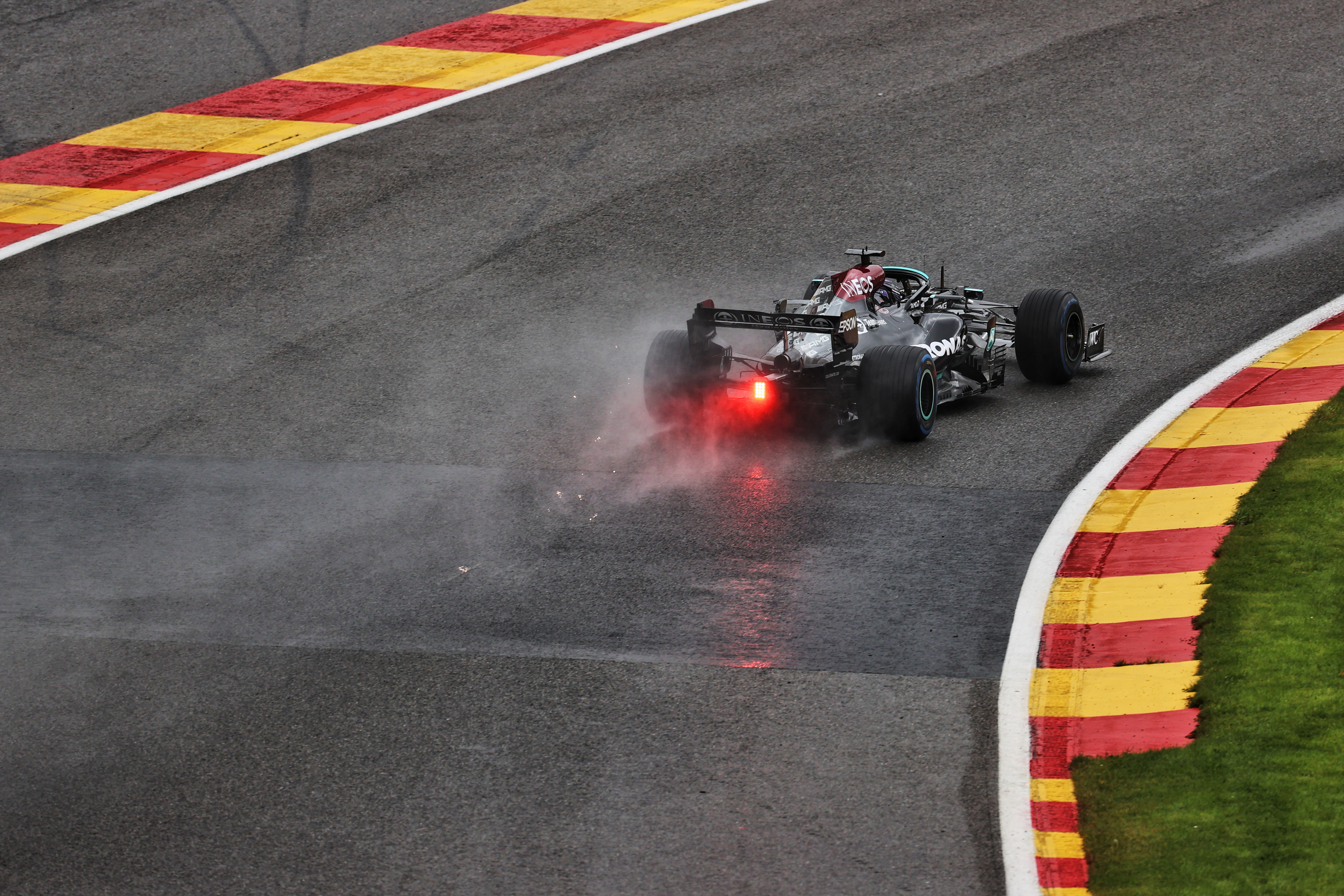
Qualifying positions were effectively awarded (half) points for the first time in F1 history and as such Hamilton’s less than full commitment through Eau Rouge in the wet ended up being punished as in a car which had the pace for pole he was demoted by both Verstappen and George Russell.
Points loss – net 8.5 (driver).
Monza
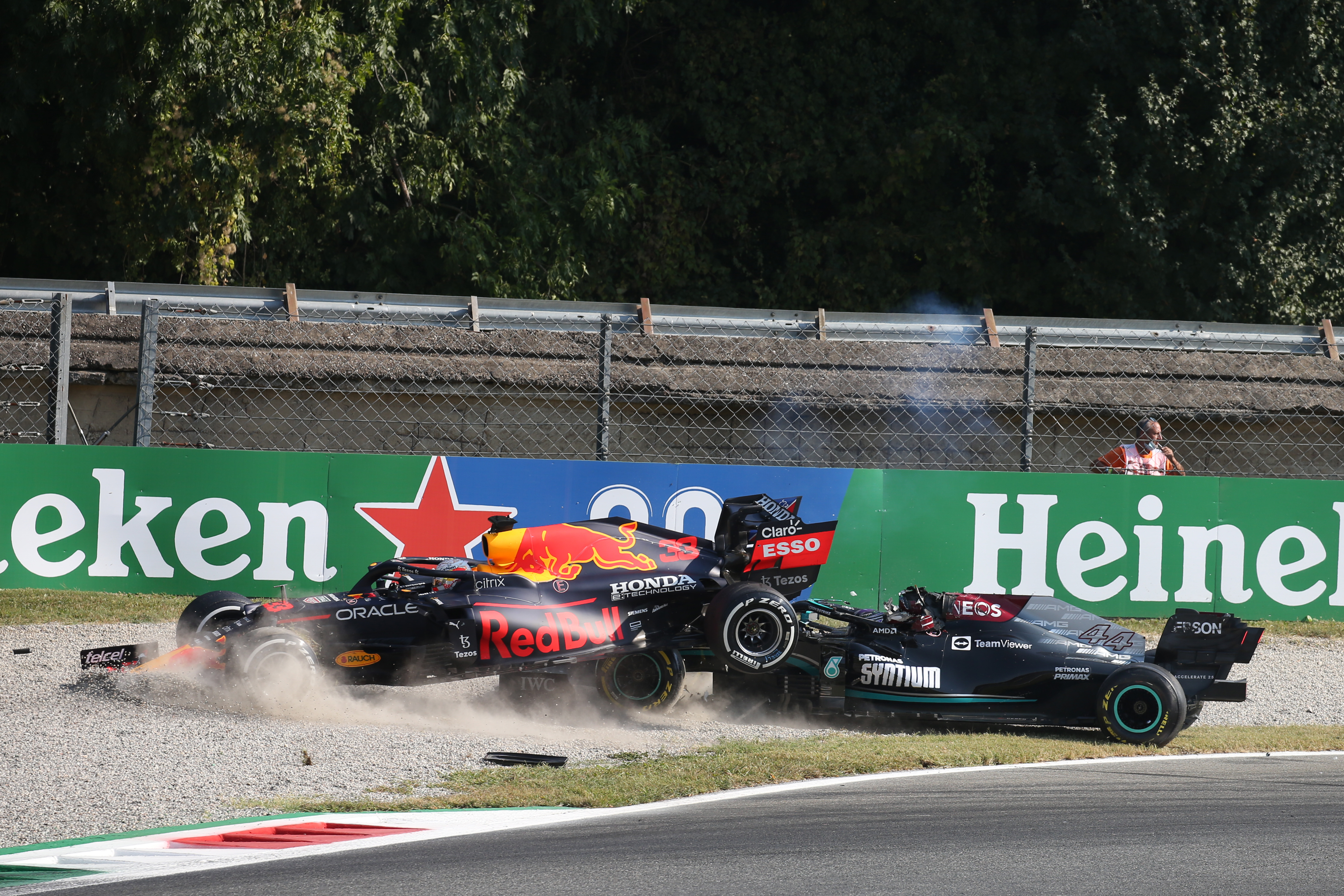
A poor start in the sprint race – “about 2mm too deep on the clutch,” as he described it – put him behind Verstappen and the McLarens for the rest of the weekend when he had dominant car pace.
He lost the chance of 25 points with that poor start. He was on-course to have retrieved 12 or 15 of them but for a delay at his pitstop which brought him out level with the also-delayed Verstappen.
Their collision unfolded and no points were scored. Keeping the wheel-to-wheel judgement calls out of this assessment, we can attribute the poor start to the loss of 10 points and the pitstop delay for the remaining 15.
Points loss – 10 (driver). 15 (team operations).
Abu Dhabi
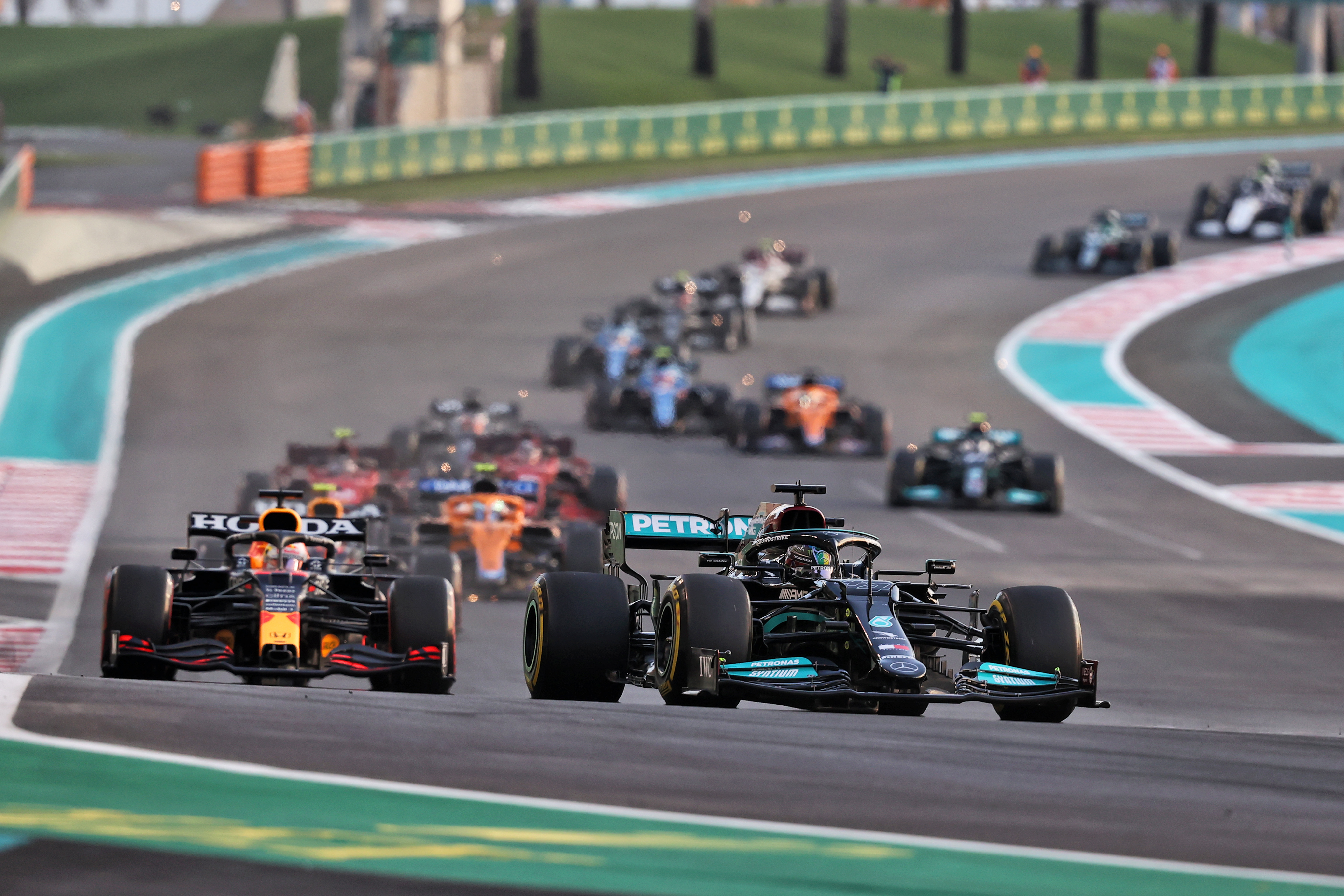
Regardless of the race director’s handling of the situation, Hamilton was very unlucky in the timing of Nicholas Latifi’s accident. Without that he’d have won comfortably.
Points loss – net 14 (luck)
We have summarised the apportioned responsibility for the points losses in the chart below.
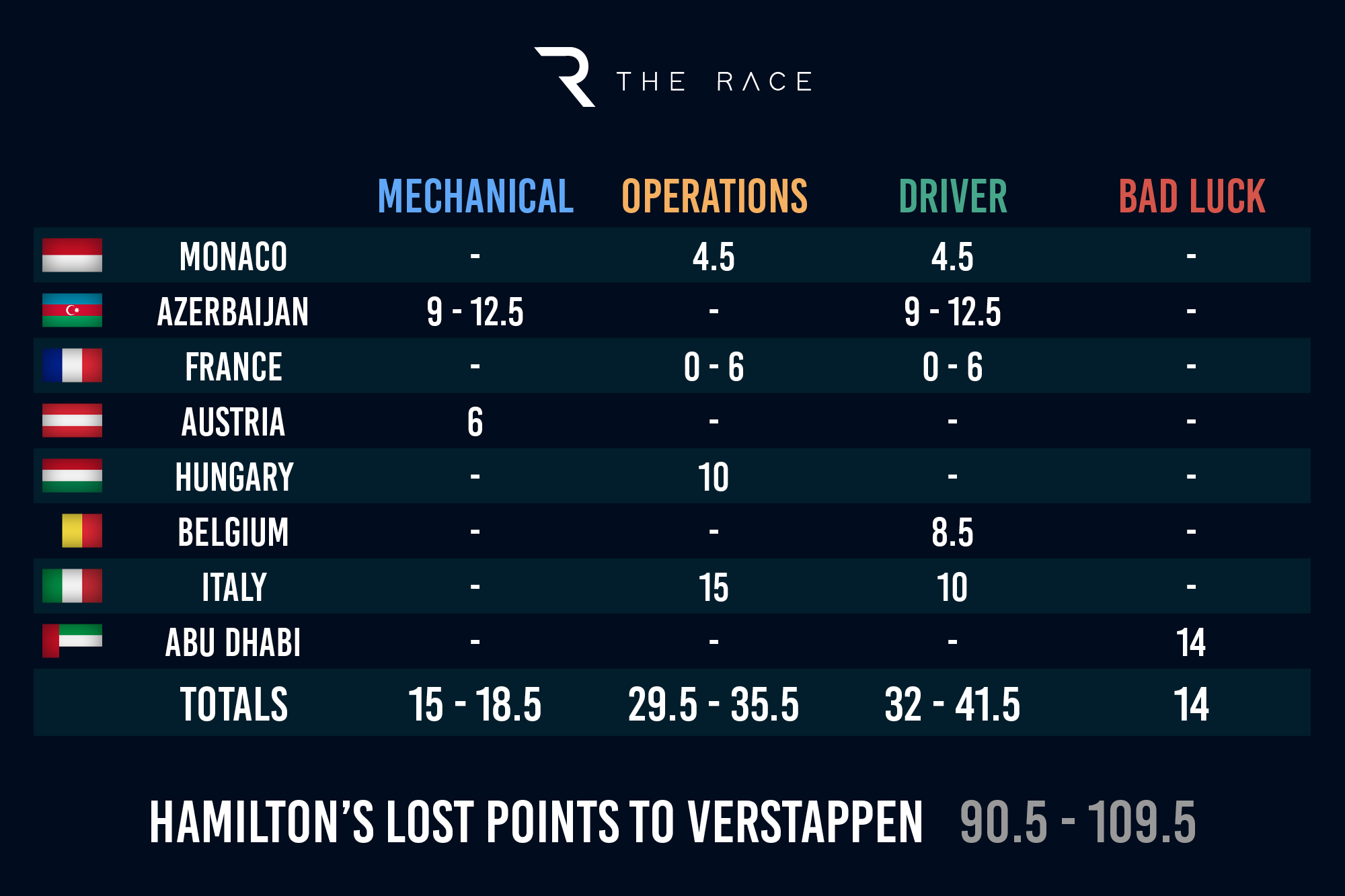
VERSTAPPEN’S LOST POINTS TO HAMILTON
Bahrain

Mercedes and Hamilton were able to steal the victory from a faster Red Bull thanks to a bold very early first stop which undercut them into the lead and which then required a delicate balancing act from Hamilton to maintain. Losing that track position at the first stops lost Verstappen a winnable race.
Points loss – net 12 (team operations).
Imola

Although Verstappen dominated the race in the fastest car (the Mercedes was close but took far too many laps to get its tyres up to temperature, giving Verstappen the winning cushion), he was extremely unlucky that Hamilton was rescued by a red flag from a judgement error which had put him in the gravel trap.
The Bottas/Russell accident allowed Hamilton to get himself back up to second by the end rather than finishing a lap down and probably out of the points. It also allowed him the opportunity to better Verstappen’s fastest lap.
Although Verstappen didn’t lose points here, he made a net gain over his rival of only 6 points rather than the 26 he would have gained but for the timing of the flag. In this case we have expressed the lost points relative to Hamilton.
Points loss – net 20 (luck).
Portugal
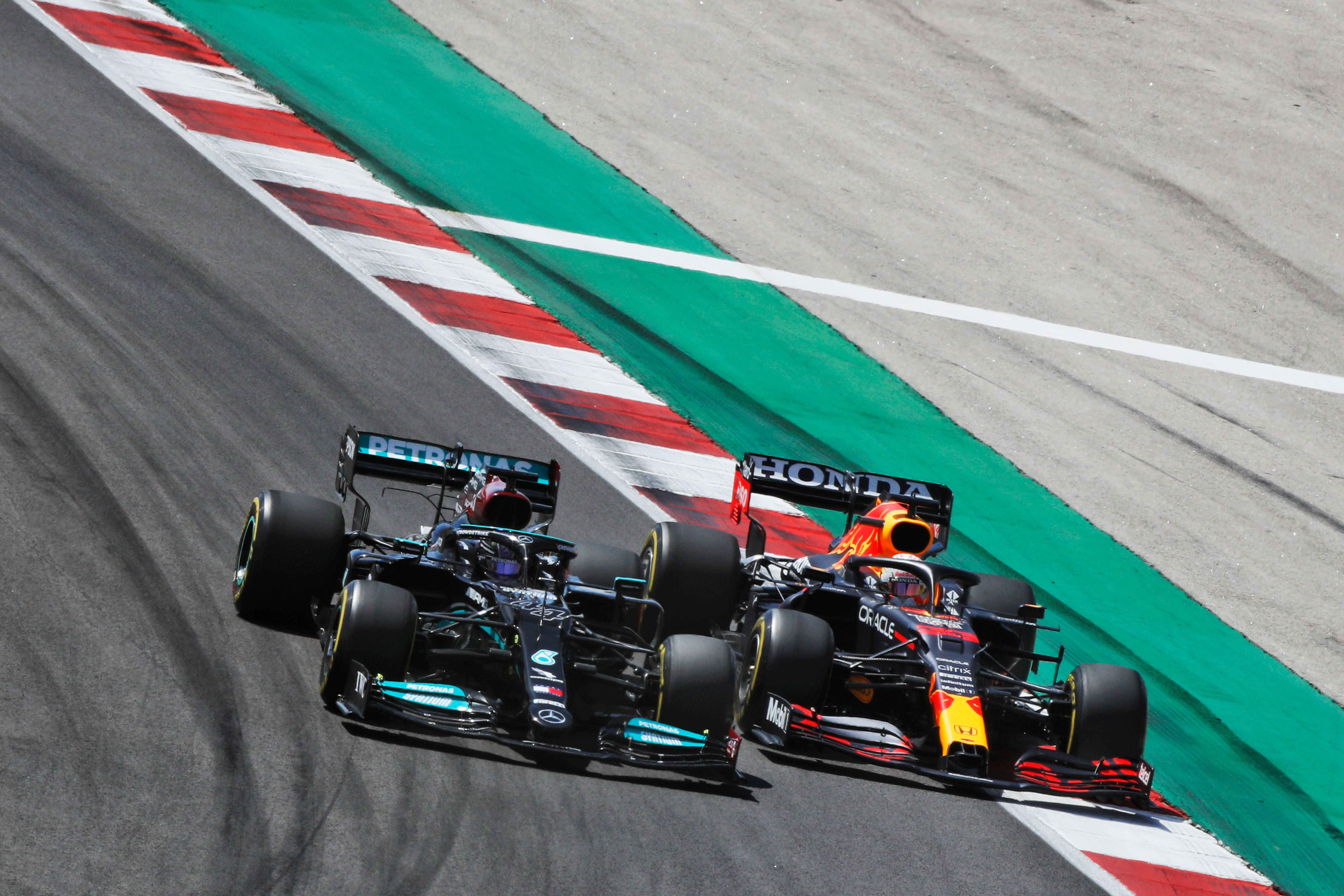
Hamilton, having been demoted down to third by Verstappen, was able to repass the Red Bull and then Bottas to take the win, with Verstappen later getting by Bottas for second.
He felt that he did not have the straightline speed needed to pass Bottas and that this put him in the vulnerable position to be passed by Hamilton.
But closer examination revealed that on the respective fastest laps of Verstappen and Hamilton the straightline speed profile of the two cars was virtually identical.
Hamilton passed Verstappen after the latter lost momentum with a twitch of oversteer in the long looping corner onto the pit straight. The contrast between how Hamilton was nursing the tyres through the middle section of the lap with how Verstappen was in full-attack throughout that section almost certainly had a bearing on why Hamilton got better traction out of the hairpin which in turn gave him the better exit which facilitated his overtake.
There was nothing between the two cars here and the race was won on better judgement in the cockpit from Hamilton.
Points loss – net 14 (driver).
Azerbaijan
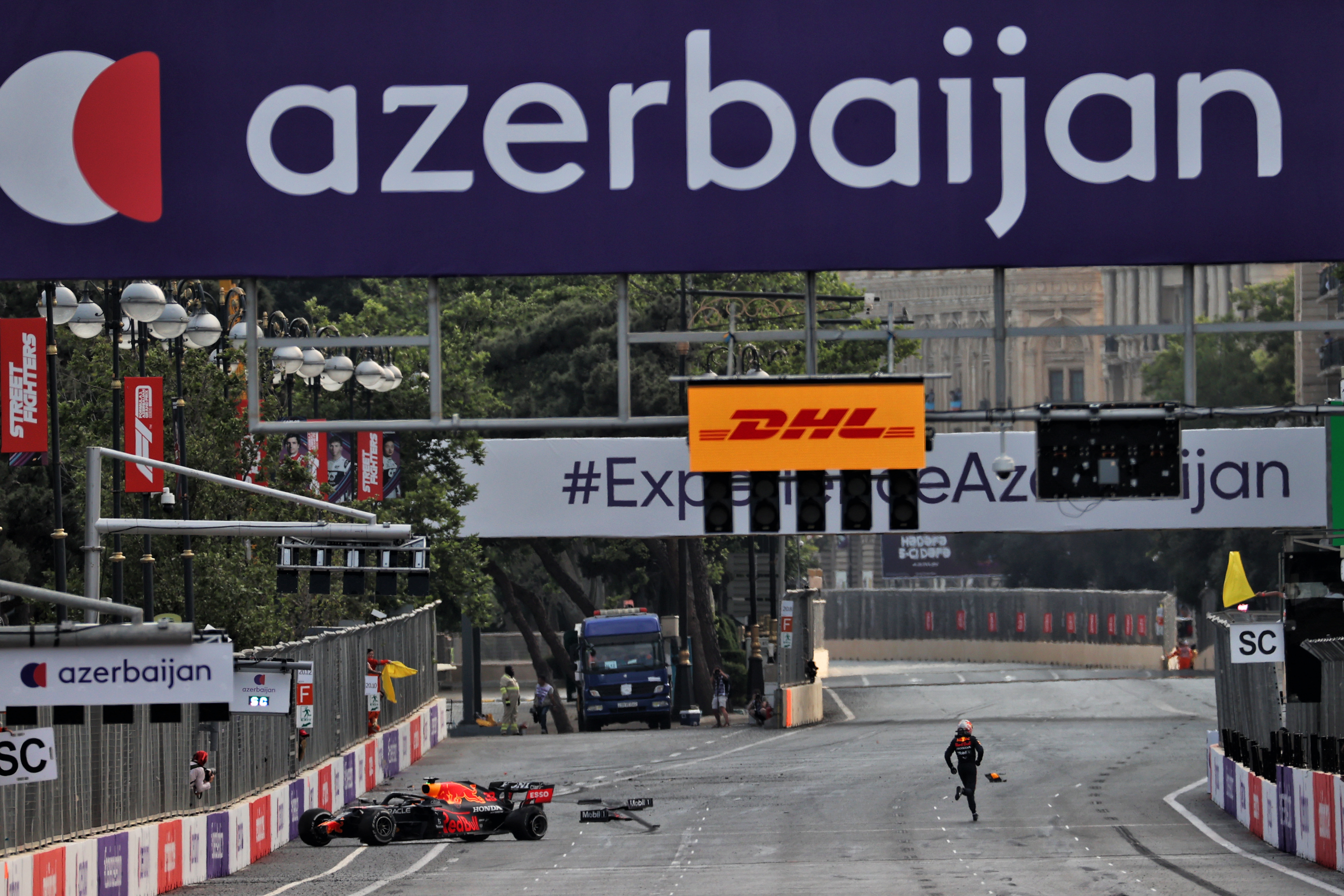
Verstappen was walking the race when a rear tyre exploded without warning (just as Lance Stroll’s had done earlier), putting him hard in the wall and out of the race.
That might be put down to just plain bad luck – except that Pirelli had reason to believe the cars of both Stroll and Verstappen had been running below the minimum pressures in the chase of performance.
Points loss – 25 (team operations).
Britain
Verstappen was perfectly entitled to not back down at Copse as Hamilton tried to pass on the inside, but was he wise to?
Surrendering the corner would have got him second at worst and still a realistic shot at the win at best.
Points loss – 18 (driver).
Hungary
His car heavily damaged by the errant Bottas at the start, Verstappen limped home an official ninth (after Vettel’s disqualification).
The Red Bull didn’t have Mercedes’ pace around the Hungaroring but without Bottas’ misjudgement a second place to Hamilton would surely have been feasible.
Points loss – 16 (luck).
Monza
A human error pitstop problem badly delayed Verstappen and put him within Hamilton’s reach, setting up the circumstances for their collision. Up until that stop, he’d been on course for third behind the two McLarens.
Points loss – 15 (team operations).
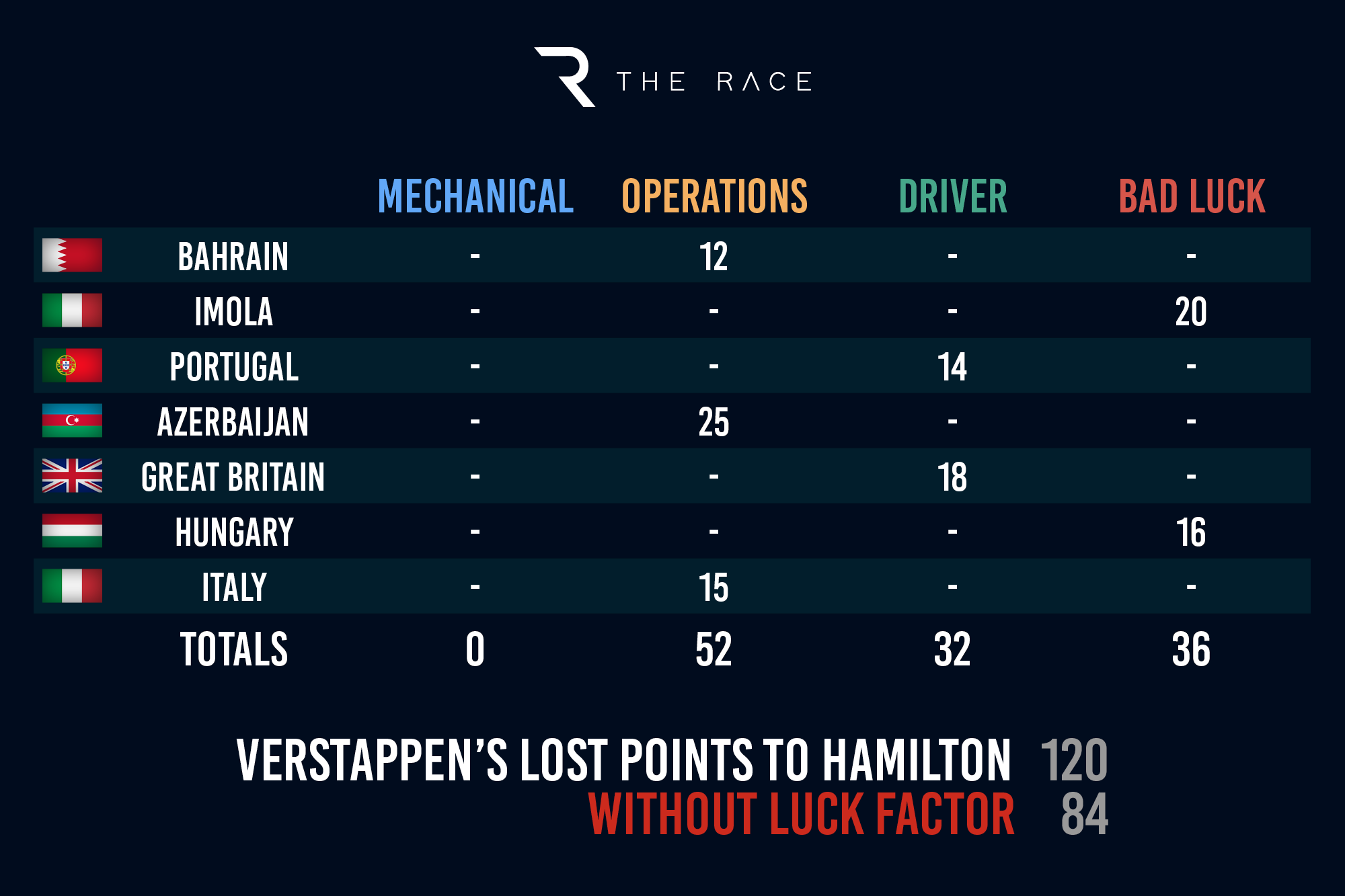
Conclusions
Without bad luck on either side Verstappen would have arrived at the title finale 36 points ahead with the title already sealed in Qatar, round 20 of 22.
Had Red Bull and Verstappen been able to fully punish Mercedes when they had greater pace in the season’s first half, Verstappen could quite conceivably have won eight of the first 10 races.
He won only five (for the reasons outlined in the charts). That’s what made the winning of the title so much harder than it might have been.
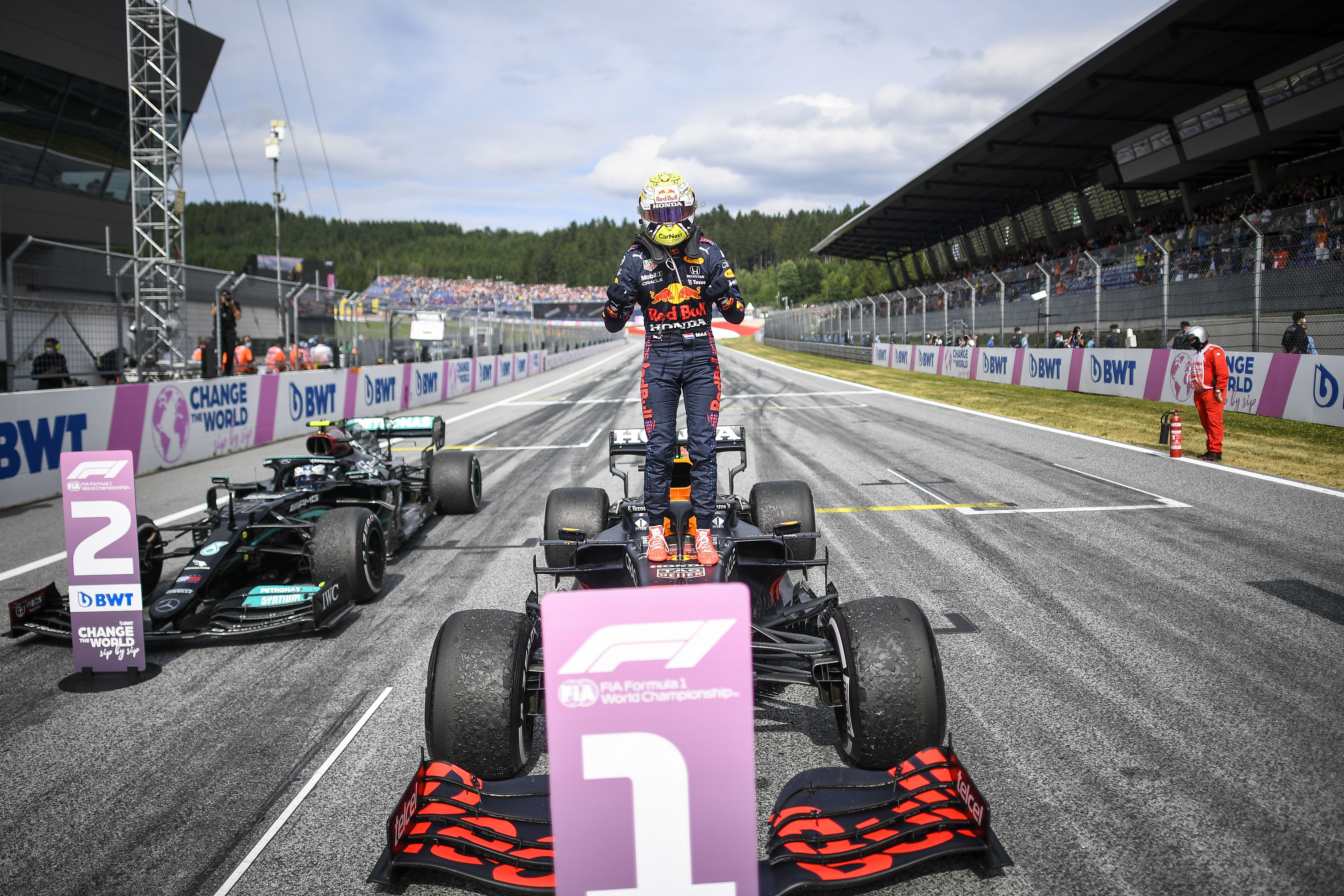
Post-Hungary, they would only have won three of the remaining 12, though, illustrating just how stark the performance pattern of Red Bull first half/Mercedes second half was.
On raw performance Red Bull could/should have won 73% of the races in the season’s first half (up to Hungary) but only 27% of the second half. Mercedes ‘should’ have won only 27% of the first half-season but 73% of the second half.
So why would Verstappen have been so far ahead in the theoretical straightforward running of the races if the two cars were roughly equal as an average over the season?
Because in the Red Bull ‘first half’ Verstappen would have been denied only twice (by Hamilton both times) whereas in the Mercedes ‘second half’ Hamilton would have been denied three times by Verstappen and once by his own team-mate Bottas after taking an engine penalty.
Furthermore, on the 10 occasions when Verstappen hadn’t won (in this imagined straight playing of every race), only once would he not be second. Whereas Hamilton would have been outside the top two on four occasions.
For Hamilton, these difficult weekends where he wouldn’t even have been second – Monaco, Baku, Istanbul (because of the engine penalty) – on top of his likely non-score at Imola, would have been the crucial weak points of the campaign against a Red Bull/Verstappen combination which was amazingly consistent.
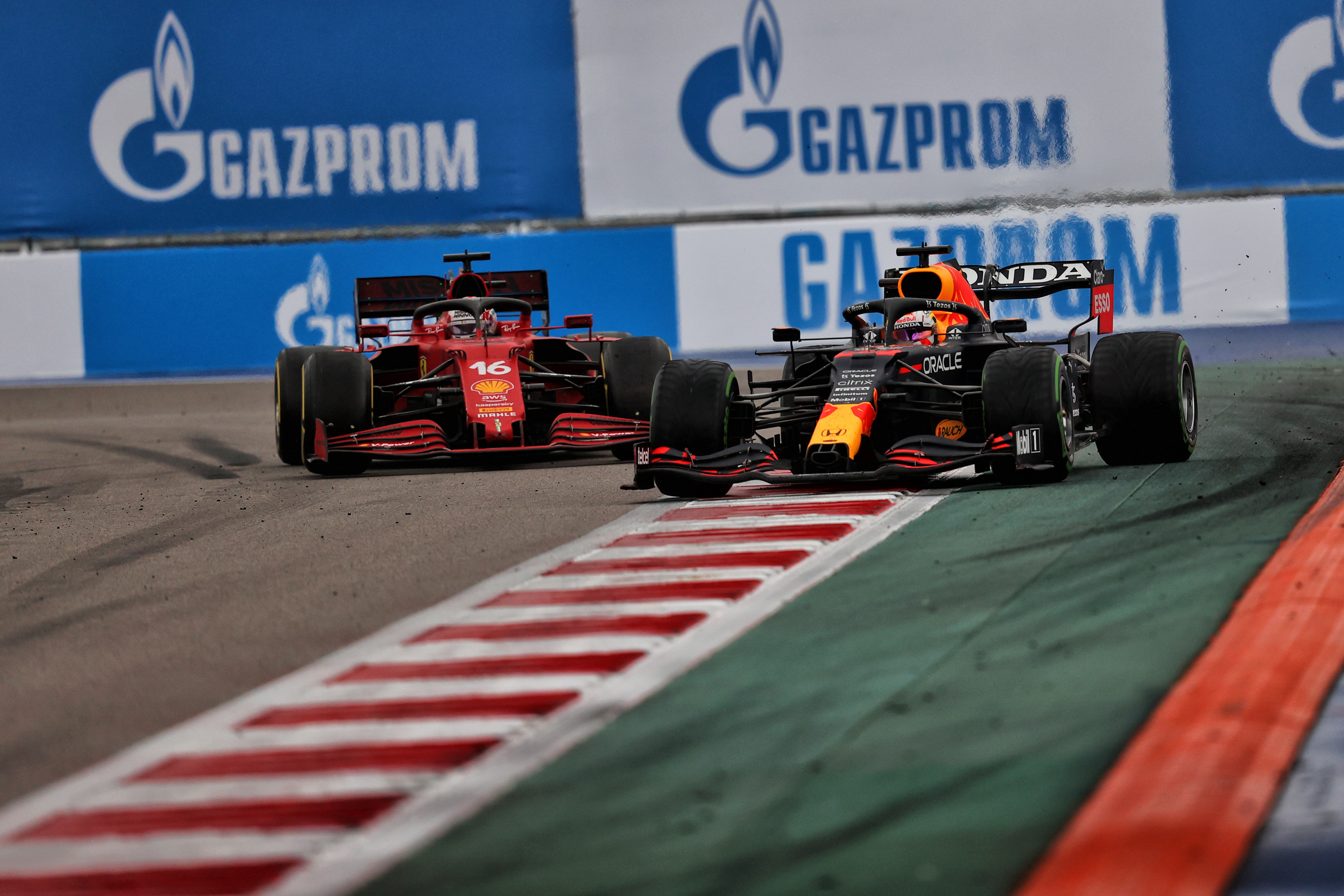
Although Verstappen’s second place in Russia from a back row penalised grid slot owed much to the late rain shower, he capitalised on that brilliantly well.
Were there occasions when one or other driver – and not the car or the operations – made the difference? It can be argued that Hamilton beat Verstappen in an equal car in Portugal and that Verstappen punished Hamilton in France.
Regardless of how fast the fresh-engined Mercedes was in Brazil, it was surely a performance of supreme virtuosity for Hamilton to pass a combined 24 cars in the sprint and main race to win there.
But throughout his career, amid such virtuosity Hamilton invariably has the odd weekend which gets away from him and we can put Monaco in that category even though there was a technical element to it.
Verstappen somehow always got the maximum performance from the car. Even on those weekends when it wasn’t at its best – Turkey and Russia notably – he could still drag a heavy-scoring result from it.
The margins are small (one lost weekend for Hamilton), but Verstappen’s performance was arguably more consistent, Hamilton’s arguably with a higher peak (Brazil).
They are all points which will be argued about between fans – and the losses and gains of each of their seasons up until the final laps of Abu Dhabi was just the playing out of an epic sporting contest.
